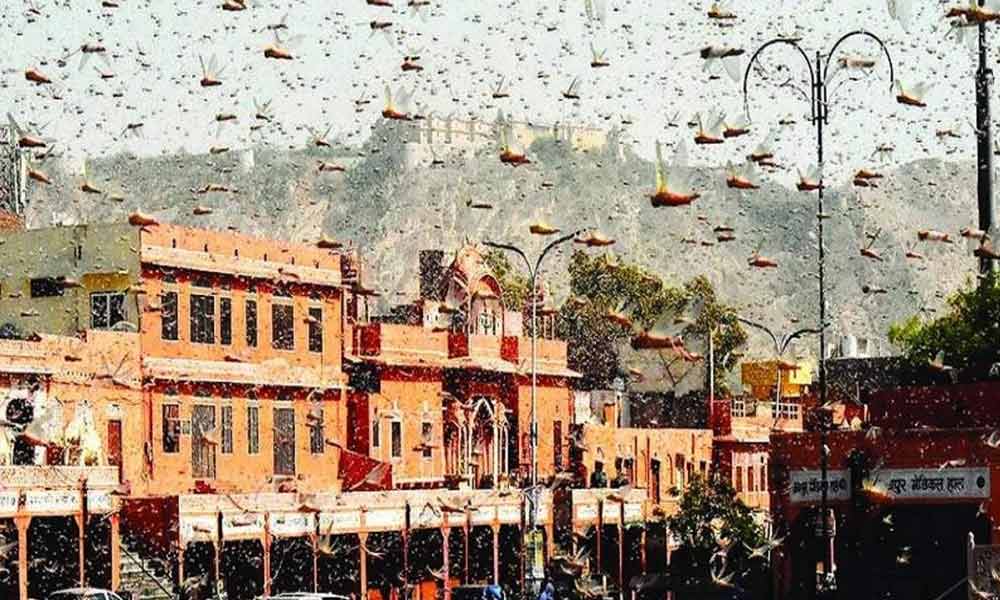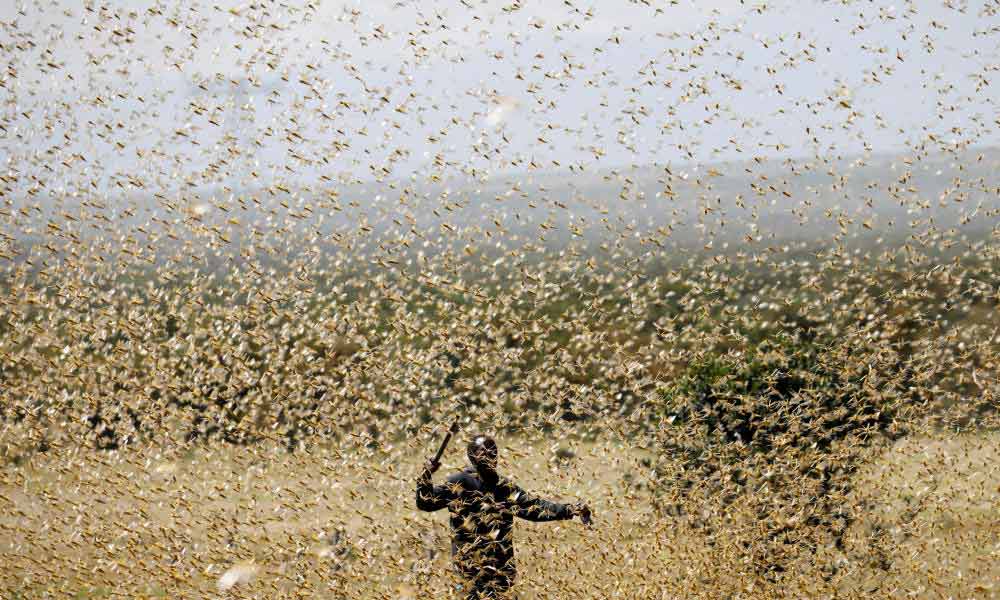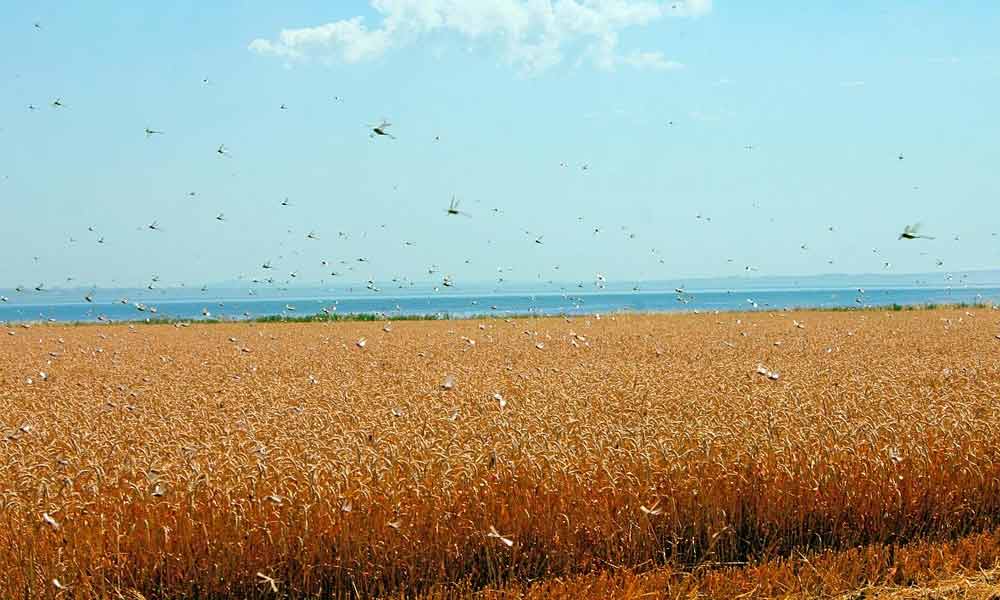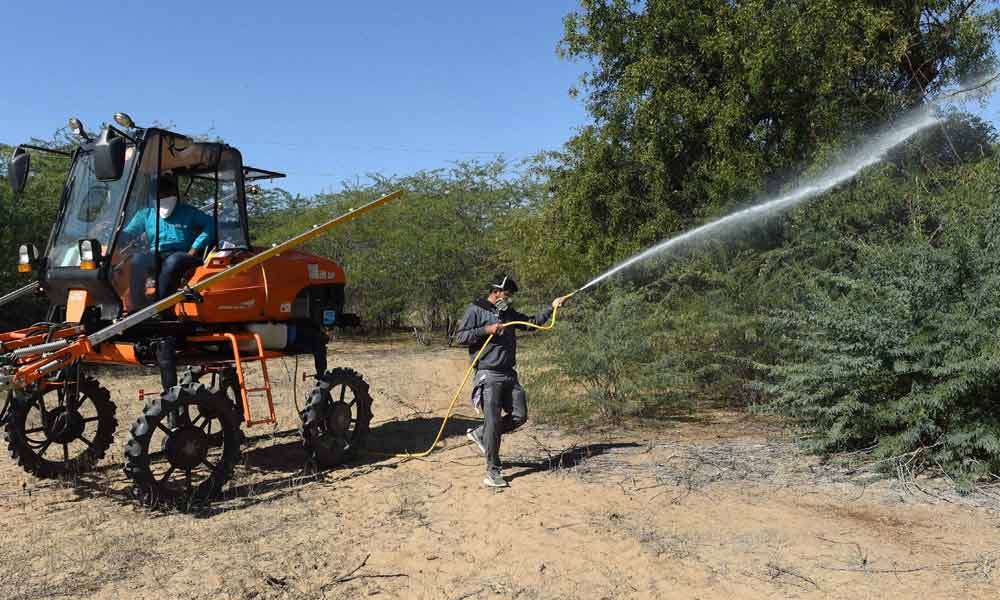Locusts have posed a serious threat to Indian farmers amid the Covid-19 pandemic.
Villages in Gujarat and Rajasthan along the Indo-Pak border stands most vulnerable to the threat.
Rajasthan is the worst-hit state by this swarm as millions of swarms of locusts invade the fields.

While India battles the Coronavirus at ‘war-footing’, a new problem jas started straining the foreheads of authorities in Northern India. A drive of locust plague has invaded the states of Rajasthan, Gujarat, Punjab, and Uttar Pradesh. These locusts have flown in from the neighboring nation, Pakistan. Nagpur, Barmer and Jaisalmer are the worst affected Indian districts.
While Indian farmers fear the looming destruction which the plagues pose to their threat, these locusts have already devasted crops globally.

In the period of July-December, around 2 crore 50 lakh people are likely to face food shortage as a result of crops being damaged by these insects. In Yemen too around 1 crore 70 lakh people are also expected to be impacted as these locusts are reproducing in large quantities in the hinterland.
According to a study, “A swarm of locust spread over a square kilometer can chew through food enough for 35,000 people in a day.”
While locusts pose a serious threat to the crops but a question that pertains to many is whether these insects affect humans. The locusts do not cause any harm to either Humans or animals. There has been no proof that locusts can cause any disease to humans or harm them in any way whatsoever.

Indian experts have said that a second round of these locusts is breeding in Baluchistan and Iran.
A UP government spokesman stated, “In view of the threat of locust attack in areas bordering Madhya Pradesh and Rajasthan, local officials have been put on alert and asked to remain prepared with chemicals in tractor-mounted sprayers, power sprayers and fire brigades, and undertake heavy spraying during the night,”
Kamal Katiyar, Deputy Director Agriculture has been quoted stating, “The swarm of locusts is moving and is small in size. We have got the news that nearly 2.5 km to 3 km long swarm of locusts has entered the country. A team has come from Kota (Rajasthan) to tackle the locusts.”

Putting light upon the relief measures undertaken to tackle this swarm, the Ministry of Agriculture’s, Locust warning Organisation has informed that an onfield team of 50 members has been formed to track the movement of these swarms. Drones are also used for the spray of Malathion 96 which is an organophosphate insecticide in nonagricultural areas while, chlorpyrifos in agricultural lands by drones, fire brigade department, and tractors equipped with necessary equipments to spray the disinfectant.








